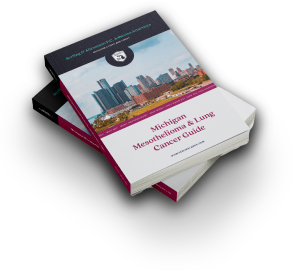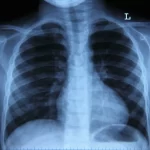What is Asbestos?
Asbestos is a naturally occurring mineral that's made up of tiny fibers. Asbestos is used in many things because it is heat and chemical-resistant. It is found in buildings and building materials such as insulation, ceiling and floor tiles, and drywall. It is also found in old automobile parts such as brakes and clutches. Due to its durability and resistance to heat and chemicals, asbestos was widely used in various industrial and commercial products.
Asbestos is a Natural Resource
Asbestos is found in rock formations and is present in small amounts in the air, water, and environment. The term asbestos broadly refers to six groups of naturally occurring mineral fibers. In its natural state, asbestos is found in bundles of fibers that can be separated into thin yet durable threads created when rocks undergo intense increases in pressure and temperature.
Often found on, or just below the earth's surface, asbestos is very easily mined.
Where Does Asbestos Come From?
Asbestos minerals are found in many parts of the world, including the United States. Historically, asbestos was used in a wide range of construction materials and products, including asbestos insulation, vinyl floor tiles, roofing shingles, cement products, and even stove-top pads. In the 20th century, it was extensively mined and manufactured, leading to widespread occupational exposure.
Throughout history, asbestos has been used in many items, especially those found in buildings and cars. We now know asbestos can be really dangerous, inspiring rules and regulations to keep people safe from asbestos exposure. The U.S. Environmental Protection Agency (EPA) and the Occupational Safety and Health Administration (OSHA) are federal agencies responsible for regulating and managing the risk of asbestos exposure.
How Does Asbestos Affect Health?
Exposure to asbestos fibers can lead to serious health risks. When you breathe in tiny pieces of asbestos, they can get stuck in your lungs. Over time, these pieces can cause serious health problems, like lung cancer, mesothelioma, and asbestosis. Even though you might not feel sick right away, the problems can show up many years later.
When asbestos-containing materials are disturbed, tiny asbestos particles can be released into the air. These microscopic fibers can then be inhaled, especially by those working in industries where asbestos materials are present, such as construction or mining. Long-term exposure to airborne fibers is particularly dangerous, increasing the risk of developing asbestos-related diseases.
Common Asbestos-Related Diseases:
- Asbestosis: A chronic non-cancerous lung disease causing shortness of breath, coughing, and permanent lung damage.
- Lung Cancer: Increased risk of lung cancer is a significant health hazard associated with asbestos exposure.
- Mesothelioma: A rare and aggressive cancer affecting the lining of the lungs (pleura), abdominal cavity (peritoneum), and other organs.
- Pleural Plaques: Thickened patches on the lining of the lungs or diaphragm, indicating asbestos exposure.
How Can We Stay Safe From Asbestos?
To stay safe, it's important not to disturb things that might have asbestos in them, like old insulation or ceiling tiles. If you think you might have asbestos in your home, it's best to leave it alone and let the experts handle it. Asbestos removal should always be conducted by a certified asbestos professional who follows safety regulations to minimize the risk of asbestos exposure.
Safety Measures:
- Avoid Disturbing Asbestos Materials: Do not cut, sand, or drill into materials that may contain asbestos.
- Use Protective Equipment: Workers handling asbestos should use personal protective equipment (PPE), including masks and respirators.
- Regular Monitoring: Buildings with known asbestos materials should be regularly inspected for signs of wear or damage.
- Proper Disposal: Asbestos materials should be disposed of in accordance with federal and local regulations to prevent environmental contamination.
Types of Asbestos
There are different types of asbestos, each with varying degrees of risk. The main types include:
- Chrysotile (White Asbestos): The most common type used in commercial products. It is found in many forms of asbestos-containing materials, such as roofing materials and brake pads. Chrysotile is recognized by its white, flexible, curly fibers, and is famous for its heat-resistant properties. Historically, Chrysotile asbestos was heavily produced in both the United States and Canada.
- Amosite (Brown Asbestos): Often used in cement sheets and pipe insulation. Additionally, it was used in the form of insulation within ceilings on commercial and industrial buildings. Amosite asbestos is primarily mined out of South Africa.
- Crocidolite (Blue Asbestos): Used in some spray-on coatings, pipe insulation, and cement products. It is considered the most hazardous form. It was mined all over the world including heavily in Bolivia, Australia, and South Africa.
- Anthophyllite Asbestos: Less commonly used, but found in some insulation materials. Commonly mined out of Finland, Anthophyllite is often found as a contaminant in Chrysotile asbestos, vermiculite, and talc.
- Tremolite and Actinolite Asbestos: Typically found as contaminants in other minerals and used in various industrial applications. Tremolite and Actinolite are so similar chemically that they are often associated as one.
Asbestos Regulations and Public Health
Due to the severe health risks, numerous regulations have been implemented to control asbestos use and manage asbestos-containing materials. The EPA, OSHA, and other agencies have established guidelines to protect workers and the public from asbestos exposure. The National Institute for Occupational Safety and Health (NIOSH) conducts research and provides recommendations for preventing work-related injuries and illnesses, including those caused by asbestos.
Key Regulatory Measures:
- Asbestos Hazard Emergency Response Act (AHERA): Requires schools to inspect for asbestos-containing materials and prepare management plans.
- Clean Air Act: Regulates air emissions of asbestos.
- Toxic Substances Control Act (TSCA): Provides EPA with authority to ban or restrict the manufacture, processing, distribution, and disposal of asbestos.
On March 18th, 2024, the EPA issued a final rule banning the continued utilization of Chrysotile asbestos. Prior to this rule, Chrysotile asbestos was the sole form of asbestos used or imported into the US. This asbestos ban is the first rule to be finalized under the Toxic Substance Control Act (TSCA).
Asbestos Products
For decades, asbestos was used in manufacturing due to its durability and heat-resistant properties. This made it a natural solution for insulation in extreme temperatures usually in industrial settings where trades tradespeople worked. Some common products that contain asbestos include:
- Adhesive putties
- Aircraft weapons systems
- Arc chutes
- Asbestos coated cable
- Asbestos fibers
- Asbestos furnace cement
- Asbestos gloves
- Asbestos insulated pumps
- Asbestos insulated valves
- Asbestos insulation or lining
- Asbestos jackets
- Asbestos packing
- Asbestos roofing felts
- Asbestos roofing shingles
- Asbestos rope
- Asbestos valves
- Asbestos wrapped piping
- Bakelite panels
- Blankets
- Block insulation
- Boards
- Boilers
- Bondstrand pipe
- Brake drums
- Brake housing
- Brake linings
- Brake pad linings
- Brake pads
- Brake shoes
- Ceiling tiles
- Cement
- Cement powder
- Chemtite pipe
- Chico X Powder
- Circuit breakers
- Cloth
- Clutches
- Coatings
- Coils
- Compounds
- Compressors
- Crane brakes
- Distributor caps
- Electrical boxes
- Electrical switches
- Engine and electrical insulation
- Engine gaskets
- Epoxy
- Exhaust system and pipes
- Fillers
- Fireproofing spray
- Floor tiles
- Front-wheel drive components
- Furnaces
- Gaskets
- Gloves
- Glues
- Gunning refractories
- Hardeners
- Heat seals
- Heat treat furnaces
- Hood liners
- Insulated pumps
- Insulated valves
- Jackets
- Lacquers
- Large electrical motors
- Large fans and blowers
- Large insulated turbines and generators
- Liquids
- Micarta board
- Millboard
- Missile casings
- Molding boards
- Molding compounds
- Mufflers
- Oakum rope
- Ovens
- Overhead crane electrical brake systems
- Packing
- Panels
- Pastes
- Personal protection equipment (PPE) such as aprons and gloves
- Pipe joint compound
- Plaster
- Pumps
- Rail car brakes
- Railroad ties
- Residential furnaces
- Resin
- Roofing coating
- Sealers
- Sealing cement
- Sheets
- Steam line pipe covering
- Steam traps
- Switches
- Tanks
- Tape
- Transite pipe
- Transite siding
- Valves
- Vehicle components
- Wallboard
- Water heater
- Welding rods
Occupations and Industries with High Asbestos Exposure
Individuals who work in the following industries are at a higher risk for asbestos exposure.
- Foundries
- Plastics
- Utilities
- Refineries
- Construction
- Steel Mills
- Maritime
- Auto
- Chemical
- Shipyards
- Railroads
Individuals who work in these industries in the following capacities are at an increased risk for asbestos exposure.
- Boiler Operators
- Boilermakers
- Bricklayers
- Carpenters
- Crane Operators
- Drywallers
- Electricians
- Insulators
- Iron Workers
- Laborers
- Maritime Workers
- Mechanics
- Millwrights
- Pipe Coverers
- Pipefitters
- Plasterers
- Plumbers
- Railroad Workers
- Roofers
- Welders
Asbestos Litigation
Asbestos litigation has remained constant for many years due to the number of workers who have been exposed to asbestos. Workers have a right to sue after asbestos exposure in their occupation leads to deadly consequences. Hundreds of thousands of industrial, construction, and mechanical workers have been injured and killed by unlawful exposure to asbestos in their workplace environment. Exposures in these fields from the 1940s - 1980s have continued to become apparent. Nearly 90% of all asbestos claims are made by former industrial and construction workers.
Asbestos product liability actions include claims against suppliers and manufacturers of asbestos materials.
Concealment surrounding what companies truly knew about the dangers of asbestos has impacted the industry since the early 1930s. Throughout the early to mid-20th century, court evidence has revealed multiple companies contributed to the asbestos coverup. in 1932, two large asbestos companies manipulated a study on asbestos workers to downplay the seriousness of asbestos-related diseases. Asbestos industry leaders claimed they had no knowledge of asbestos health risks prior to 1964, but internal documents have since proved otherwise.
Asbestos Bankruptcy Trusts
The modern history of asbestos claims begins with Borel v. Fibrebord in 1973. The court, in this case, held that manufacturers of asbestos-containing material were strictly liable for failure to warn workers of the dangers of asbestos. This case led to a storm of asbestos litigation cases including Michigan's first successful asbestos verdict brought by Michael Serling in 1975.
More than ten thousand corporations have been named as defendants leading to hundreds of bankruptcies that have piloted the creation of a system for compensating victims. Bankrupt companies continue to compensate victims through the creation of trusts as part of their emergence from bankruptcy. The bankruptcy trusts are designed to compensate current and future asbestos claimants equally.
Conclusion
While asbestos was once regarded as a highly useful resource, we now know of its dangers.
Awareness of asbestos and its associated health risks is crucial for preventing exposure and protecting public health. Organizations like the American Lung Association and the Mesothelioma Center provide resources and support for individuals affected by asbestos-related diseases. Trusted mesothelioma resources and healthcare professionals, including mesothelioma doctors and oncology patient navigators, can offer guidance and care for those diagnosed with asbestos-related conditions.
Staying informed about asbestos and adhering to safety guidelines can help mitigate the health risks associated with this toxic mineral. For further information and support, individuals can consult with federal agencies like the EPA and OSHA, as well as healthcare professionals and trusted medical resources.
















